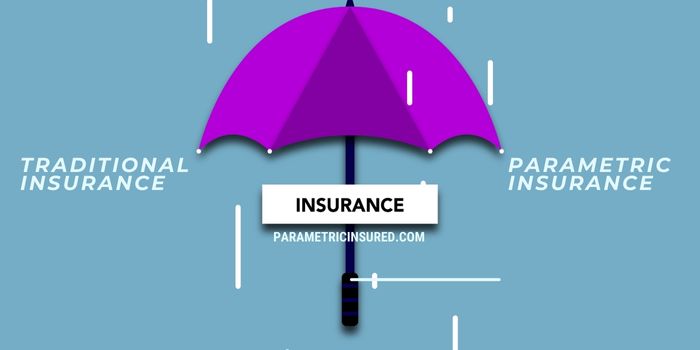Traditional Insurance Vs Parametric Insurance: Once the event occurs in the traditional insurance, then there’s a lot of process to go through before you actually get it paid out. You have to submit a claim, assessors review it, you have loss adjusters, BI adjustments, you might even have to go to court. And depending how complex or or how wide spread the event is, you know it may take up to years to get paid out.

The Traditional Insurance focuses on indemnifying actual losses based on individual claims assessment, whereas parametric Insurance provides predefined payouts based on measurable parameters, offering speed and certainty in compensation but potentially introducing basis risk due to the parameter correlation with actual losses. Each type has distinct advantages and limitations depending on the insured’s needs and the nature of the risks being covered.
Although parametric solutions have been widely available since the late 1990s, they have found their way into corporate insurance very recently. Parametric insurance solutions offer a means to guarantee direct payout after a qualifying event and protect against unpredictable but potentially devastating risks in ways traditional insurance packages cannot. These insurance solutions may offer alternatives to funding losses that are not possible with traditional insurance products that indemnify for an actual loss sustained.
The Myths and Pitfalls of Parametric Insurance
Traditional Insurance Vs Parametric Insurance
Parametric insurance is definitely a method of covering many things not linked to the actual loss, but linked to the event that has happened. For example, if there is a flood in a particular area or city, traditional insurance covers damages to property or health caused by the flood. However, if there is no property damage or health injury, but there is income loss like everything becomes standstill for two or three days while the floodwater recedes traditional insurance offers no benefit to the policyholder. In contrast, parametric insurance can compensate based on the event and its magnitude, not the actual loss. This has many benefits and brings relief to both the insurance company and the insured.
There is always a trust deficit customers doubt whether the insurance company will pay, and insurance companies are often not making money. Very few customers claim, yet they consume the maximum part of the premium pool. This results in neither the companies making money nor the customers being happy. This challenges the industry to design products where customers see value in buying insurance and are covered in probable scenarios where they would get some payout. On the insurance company side, it also makes sense as they are not replacing or compensating the entire (and often higher) loss, but are limiting it to a fixed benefit amount. So that they are not burning their balance so much, it helps both sides through this innovative product which is parametric insurance.
So basically, in insurance we have always seen there are two major challenges. One is building the trust and the second part is building the engagement because generally the insured event, when the policies get triggered, is coming with a very low probability from the statistical part. But this parametric insurance is helping the new age insurance companies as well as the insurance companies overall, who also use this particular product or extend this product on the two forefronts which is building trust and building engagement with the customers.
Traditional Insurance Vs Parametric Insurance
- Traditional insurance policy requires physical loss or damage to trigger the policy and subsequent claim payment where as Parametric insurance policy claim payout is triggered by a predefined event exceeding a predefined threshold, enabling financial loss to be covered with or without physical damage.
- Traditional Insurance involves complex policy wordings and coverage uncertainty due to detailed terms, conditions, and exclusions, often requiring expert interpretation. Parametric Insurance utilizes straightforward policy wording focused on predefined triggers for payouts, providing clarity and certainty on when coverage is triggered.
- Traditional insurance policy is subject to deductible self insured retentions where as Parametric insurance policy is subject to no deductibles.
- Traditional Insurance claim payouts are complex, which involves loss adjusting and lengthy claims process to prove loss. Claims payout may take several weeks or months. Parametric Insurance offers rapid payout, often within days of the triggering event, providing quick liquidity to insured parties for immediate recovery efforts.
- Traditional insurance policy is usually an annual cover. Parametric Insurance can be negotiated on a multi-year basis, supporting longer-term risk financing strategies.
How parametric Insurance can complement traditional Insurance?
Due to natural catastrophic carve out, deductible buy down, and excess layers:
- Natural catastrophic carve out – Parametric Insurance can provide coverage specifically tailored to natural catastrophes such as earthquakes, hurricanes, or floods. By carving out these perils from traditional insurance policies and transferring the risk to parametric solutions, insureds can better manage their exposure to catastrophic events.
- Deductible buy down – Parametric Insurance can be used to reduce deductibles on traditional insurance policies, thereby lowering the financial burden on policyholders in the event of a claim. By purchasing parametric coverage to offset deductible amounts, insured parties can effectively lower their out-of-pocket expenses following a covered loss.
- Excess layers – With parametric insurance, policyholders can get extra coverage on top of traditional insurance policies to protect against large-scale losses. This additional layer of protection gives insureds added peace of mind knowing they have extra financial support if a major disaster were to occur. It ensures having enough coverage to rebuild and recover even in the worst-case scenario.